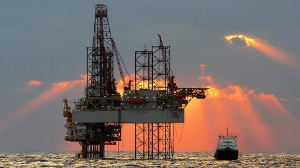 Oil markets are likely to remain volatile until there is clarity on OPEC+ production policy
Oil markets are likely to remain volatile until there is clarity on OPEC+ production policy
The International Energy Agency on Tuesday warned that world oil markets are likely to remain volatile following a breakdown in talks between OPEC members and their non-OPEC allies, creating a no-win situation.
In its latest monthly oil market report, the IEA said energy market participants were closely monitoring the prospect of a deepening supply deficit if a deal was not reached by the Organization of the Petroleum Exporting Countries and its oil-producing allies, a group known as OPEC+.
“Oil markets are likely to remain volatile until there is clarity on OPEC+ production policy. And volatility does not help ensure orderly and secure energy transitions — nor is it in the interest of either producers or consumers,” the IEA said.
OPEC+ abandoned talks last week that would have boosted oil supply. Most delegates tentatively agreed to increase oil production by around 400,000 barrels per day in monthly installments from August until the remaining supply cuts were unwound. This was likely to extend supply cuts through to the end of 2022.
The UAE rejected these plans, however, insisting on a higher baseline from which cuts are calculated to better reflect its increased capacity.
It means no agreement has been reached on a possible increase in crude production beyond the end of July, leaving oil markets in a state of limbo just as global fuel demand recovers from the ongoing coronavirus crisis.
OPEC+, which is dominated by Middle East crude producers, agreed to implement massive crude production cuts last year in an effort to support oil prices when the coronavirus pandemic coincided with a historic fuel demand shock.
The energy alliance has since met monthly to try to decide on the next phase of production policy.
OPEC+ has not made progress in resolving the dispute between OPEC kingpin Saudi Arabia and the UAE, Reuters reported on Tuesday, citing unnamed OPEC+ sources. It makes the prospect of another policy meeting this week less likely.
Oil prices
The IEA said it expects global oil demand to rise by 5.4 million barrels per day this year and by a further 3 million barrels in 2022, largely unchanged from last month’s forecast.
Meanwhile, the “remote” possibility of a market share battle between producers is hanging over energy markets, the IEA said, warning that higher fuel prices and rising inflation could damage a fragile economic recovery.
The uncertainty over the potential global impact of the highly transmissible Covid-19 delta variant was also likely to temper market sentiment in the coming months, the group said.
International benchmark Brent crude futures traded at $75.57 a barrel on Tuesday morning, up 0.5% for the session, while U.S. West Texas Intermediate futures stood at $74.51, around 0.6% higher.
“While prices at these levels could increase the pace of electrification of the transport sector and help accelerate energy transitions, they could also put a drag on the economic recovery, particularly in emerging and developing countries,” the IEA said.
Oil prices rallied more than 45% in the first half of the year, supported by the rollout of Covid vaccines, a gradual easing of lockdown measures and record production cuts from OPEC+.
“Although bullish sentiment has been somewhat tempered recently, oil prices are still comfortably holding above $70/bbl. Whether this remains so depends wholly on the next move by the OPEC+ alliance,” Stephen Brennock, oil analyst at PVM Oil Associates, said in a research note.
“The longer the standoff continues the harder it will be to resolve the situation,” he added.